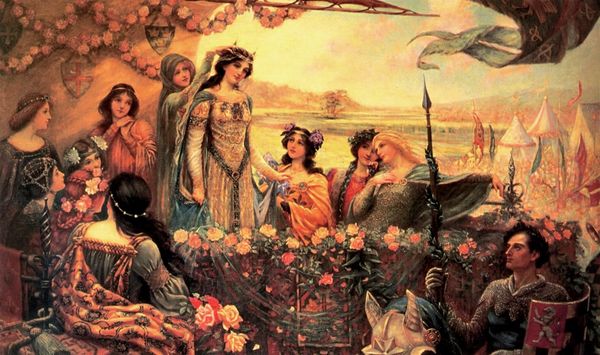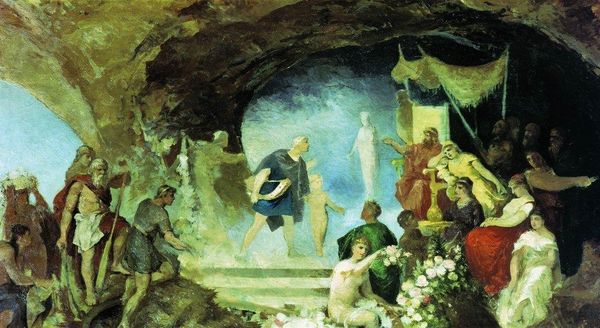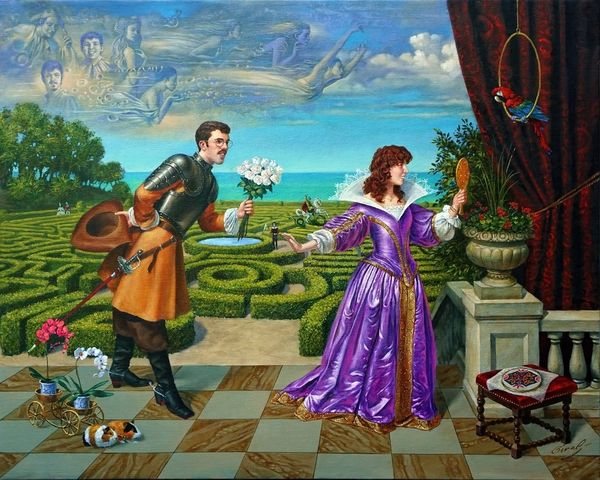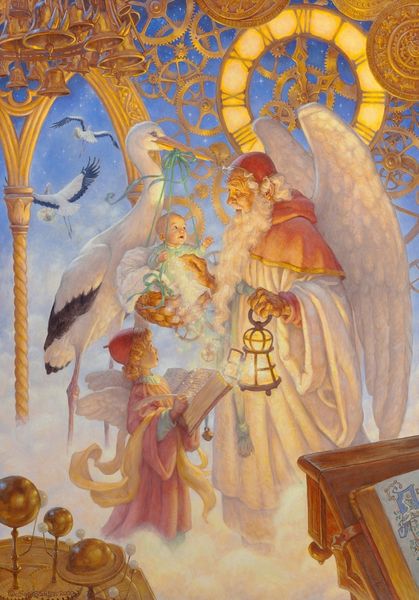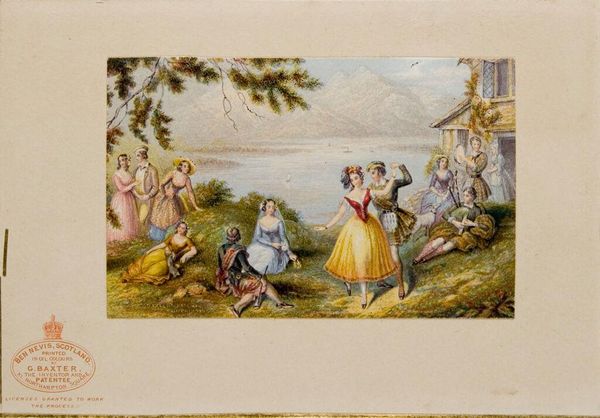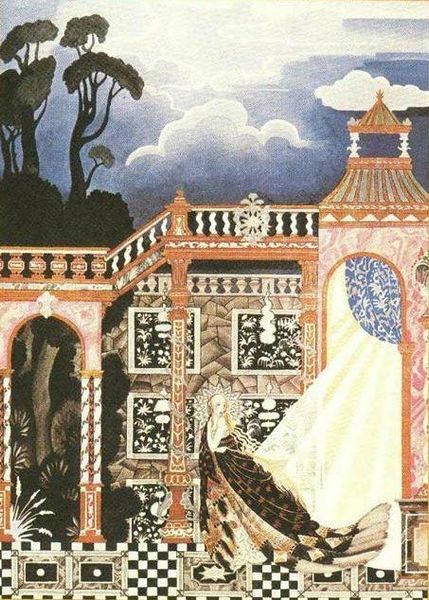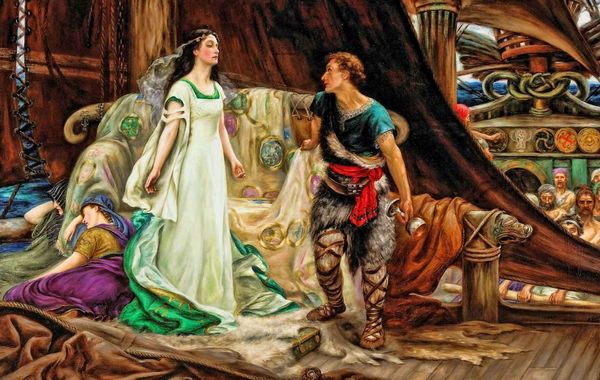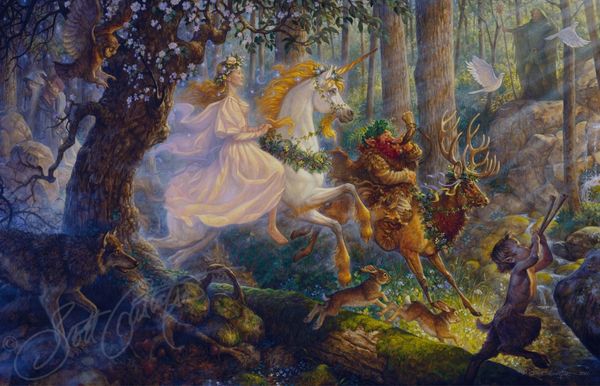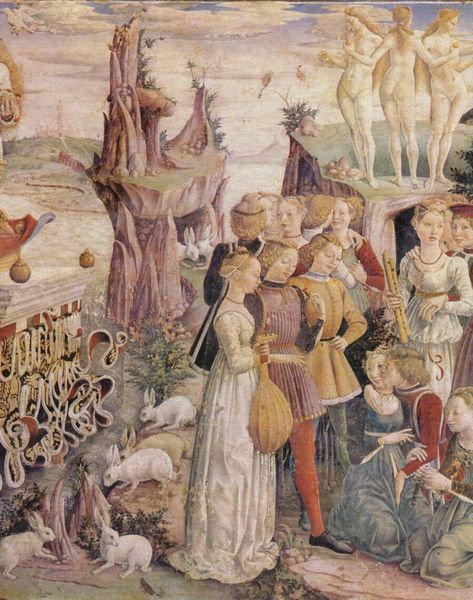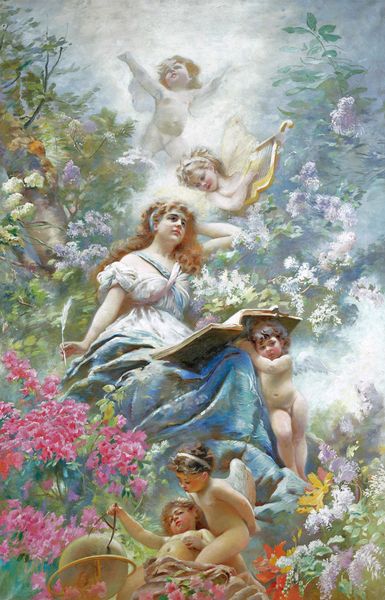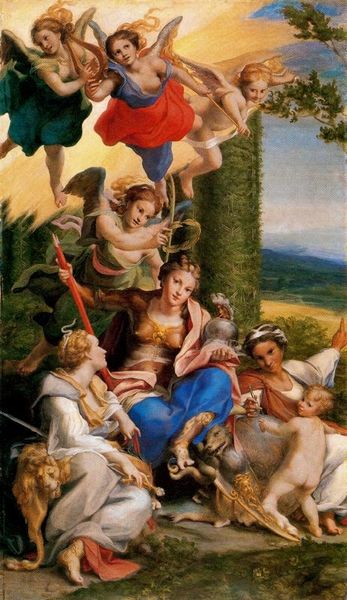
Copyright: Public domain
Curator: Evelyn De Morgan's oil painting from 1893, titled "Life and Thought Have Gone Away", immediately evokes a sense of ethereal sorrow. The sharp juxtaposition of forms makes it almost seem like two artworks mashed together. Editor: It does strike me as segmented, certainly. The composition is divided quite distinctly, isn't it? On one side, weighty, earthbound forms – architecture, figures in heavy garments, while the other feels buoyant, full of swirling colours and winged beings. The symmetry between the halves does bring some measure of balance to it all. Curator: Let's consider those figures. We have a knight in full armor, rather rigidly posed, contrasted against the soft draping robes of the woman beside him. Her hand is ever so gently held. Look closer - see the peacock at her feet, symbol of earthly vanity, in sharp contrast with the white doves? The symbolism paints a picture of shifting values. Editor: Quite right. Doves are indeed prominent, symbols of peace and, classically, messengers from the heavens. And what about those angels on the other side? Are they souls ascending, perhaps representing “Life and Thought,” leaving the earthly domain represented by the knight? De Morgan masterfully layers her iconography. And is that a tiny city in the distance on the angelic side? That must be a stand-in for something vital. Curator: I see it too; notice how she renders it as shimmering and distant, as though a lost golden age? The overall design is complex; if you study the formal relationships in this work, the symmetry and counterpoints draw one through the canvas despite its melancholy. The architecture, although somber, seems structurally sound but faded, mirroring a grand era reduced to its formal elements alone. Editor: Absolutely. She’s speaking to us in a language of symbols. Each carefully chosen detail echoes classical motifs and resonates with turn-of-the-century spiritualist themes that suggest the fading of Victorian ideals of rigid societal roles into a world of greater mystery and possibility. A perfect distillation of Romantic and Symbolist impulses. Curator: A poignant expression of change, both beautiful and haunting, perfectly expressed through form and symbolic content. Editor: It’s certainly a moving example of how to combine meticulous observation and evocative imagery. A deeply affecting picture, even with its sadness.
Comments
No comments
Be the first to comment and join the conversation on the ultimate creative platform.
